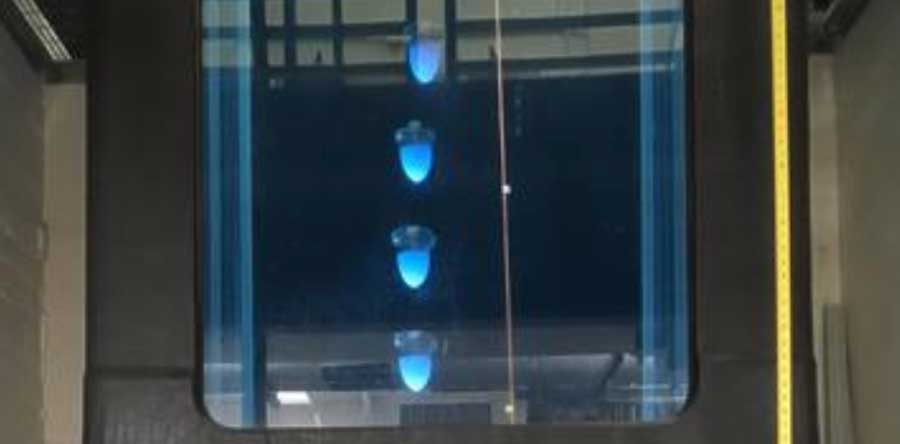Jellyfish can do little more than swim, sting, eat and reproduce. They don’t even have a brain. Yet these simple creatures can penetrate the depths of the oceans in a way that humans, for all their sophistication, cannot. Researchers at Caltech have now used 3D printing to create bionic jellyfish for ocean exploration.
By equipping these simple sea creatures with electronic components and a kind of “prosthetic hat” for carrying loads, their buoyancy is to be improved so that the jellyfish can be used to collect data. This could provide important information on temperature, salinity and oxygen levels, all of which are affected by the Earth’s changing climate.
John Dabiri, Centennial Professor of Aeronautics and Mechanical Engineering, and his team have presented this concept in the journal “Bioinspiration & Biomimetics”: “It’s well known that the ocean is critical for determining our present and future climate on land, and yet, we still know surprisingly little about the ocean, especially away from the surface,” Dabiri says. “Our goal is to finally move that needle by taking an unconventional approach inspired by one of the few animals that already successfully explores the entire ocean.”
The biohybrid jellyfish, or as Dabiri calls them, “oceanic cyborgs”, could thus become cost-effective and efficient explorers of the oceans.
“Jellyfish are the original ocean explorers, reaching its deepest corners and thriving just as well in tropical or polar waters,” Dabiri says. “Since they don’t have a brain or the ability to sense pain, we’ve been able to collaborate with bioethicists to develop this biohybrid robotic application in a way that’s ethically principled.”
Simon Anuszczyk, a graduate student and lead author of the study, developed 3D-printed front bodies for the jellyfish to make them more streamlined while carrying sensors and other electronics. The research group tested the jellyfish’s enhanced swimming capabilities in a specially constructed vertical aquarium at Caltech’s Guggenheim Lab.
“Much like the pointed end of an arrow, we designed 3D-printed forebodies to streamline the bell of the jellyfish robot, reduce drag, and increase swimming performance,” Anuszczyk says. “At the same time, we experimented with 3D printing until we were able to carefully balance the buoyancy and keep the jellyfish swimming vertically.”
The experiments showed that a jellyfish equipped with the swimming pacemaker and forebody can swim up to 4.5 times faster than a natural jellyfish while carrying a load. The cost per biohybrid jellyfish is around 20 dollars, making it an attractive alternative to research vessels, which can cost over 50,000 dollars per day to operate.
“By using the jellyfish’s natural capacity to withstand extreme pressures in the deep ocean and their ability to power themselves by feeding, our engineering challenge is a lot more manageable,” Dabiri adds. “We still need to design the sensor package to withstand the same crushing pressures, but that device is smaller than a softball, making it much easier to design than a full submarine vehicle operating at those depths. I’m really excited to see what we can learn by simply observing these parts of the ocean for the very first time.”
The research was supported by the National Science Foundation and the Charles Lee Powell Foundation, underlining the importance and interest in this innovative approach to ocean exploration.
Subscribe to our Newsletter
3DPResso is a weekly newsletter that links to the most exciting global stories from the 3D printing and additive manufacturing industry.
























